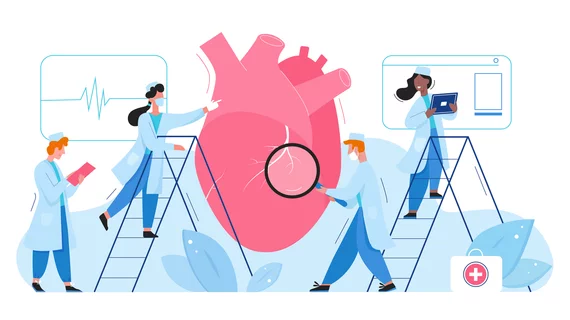Moderate prosthesis-patient mismatch after SAVR linked to worse long-term outcomes
Any degree of prosthesis-patient mismatch (PPM) after surgical aortic valve replacement (SAVR) is associated with worse long-term outcomes, according to a new meta-analysis published in the Journal of the American Heart Association.[1]
“While there seems to be a consensus on the negative impact of severe PPM after SAVR, the effect of moderate PPM on outcomes seems to remain a controversial subject,” wrote first author Michel Pompeu Sá, MD, MSc, MHBA, PhD, a specialist with the University of Pittsburgh Medical Center, and colleagues.
The study’s authors reviewed data from 65 different studies, totaling nearly 123,000 SAVR patients, for their meta-analysis. PPM was considered moderate when the indexed effective orifice area (iEOA) was between 0.65 and 0.85 cm2/m2 and severe when the iEOA was more less than 0.65 cm2/m2. All studies quantified PPM after SAVR using either in vitro data, in vivo data or Doppler echocardiography.
Tracking all-cause mortality after SAVR
Overall, PPM was seen in 55.6% of patients. After one year, survival rates were 92% for patients with PPM and 93.4% for patients without PPM. After 25 years, meanwhile, survival rates were 11.8% for patients with PPM and 20.6% for patients without PPM.
The restricted mean survival time (RMST) was two years shorter among patients with a history of PPM.
In the studies where moderate and severe PPM were originally reported separately, the moderate PPM rate was 51.4% and the severe PPM rate was 9.3%. After one year, survival rates were 93.2% for patients with no PPM, 92.5% for patients with moderate PPM and 90.4% for patients with severe PPM. After 20 years, the survival rates were 19.5%, 12,1% and 8.8% for patients with no PPM, moderate PPM and severe PPM, respectively.
The RMST was 0.8 years shorter among patients with moderate PPM and 2.1 years shorter among patients with severe PPM.
Heart failure hospitalizations, other clinical endpoints
The authors focused on some other key clinical outcomes other than all-cause mortality.
For example, four studies included in the team’s meta-analysis focused on heart failure hospitalizations. These studies covered nearly 77,000 SAVR patients. Overall, after 15 years, freedom from heart failure-related hospitalization was seen in 70.9% of patients with PPM and 76.7% of patients without PPM.
In addition, 11 studies from the meta-analysis examined cardiac mortality. These studies covered more than 8,000 SAVR patients. After 15 years, freedom from cardiac death was seen in 74.9% of patients with PPM and 80.5% of patients without PPM.
Finally, three studies from the meta-analysis examined outcomes related to aortic valve reinterventions. These studies covered more than 80,000 SAVR patients. After 15 years, freedom from aortic valve reintervention was seen in 95% of patients with no PPM, 95.4% of patients with moderate PPM and 93.9% of patients with severe PPM.
“The results of the present study suggest that any degree of PPM is associated with poorer long‐term outcomes following SAVR,” the authors wrote. “These results provide support for implementation of preventive strategies to avoid severe PPM after SAVR; however, these strategies should be balanced against other potential risks.”
The group also emphasized that PPM has been a problem for transcatheter aortic valve replacement (TAVR) patients. Their research did not focus on TAVR, they noted, but “we should keep in mind that there is evidence showing severe PPM associated with a higher risk of mortality in this group of patients.”
To read the full analysis, which also explores how care teams can avoid PPM after SAVR, click here.

